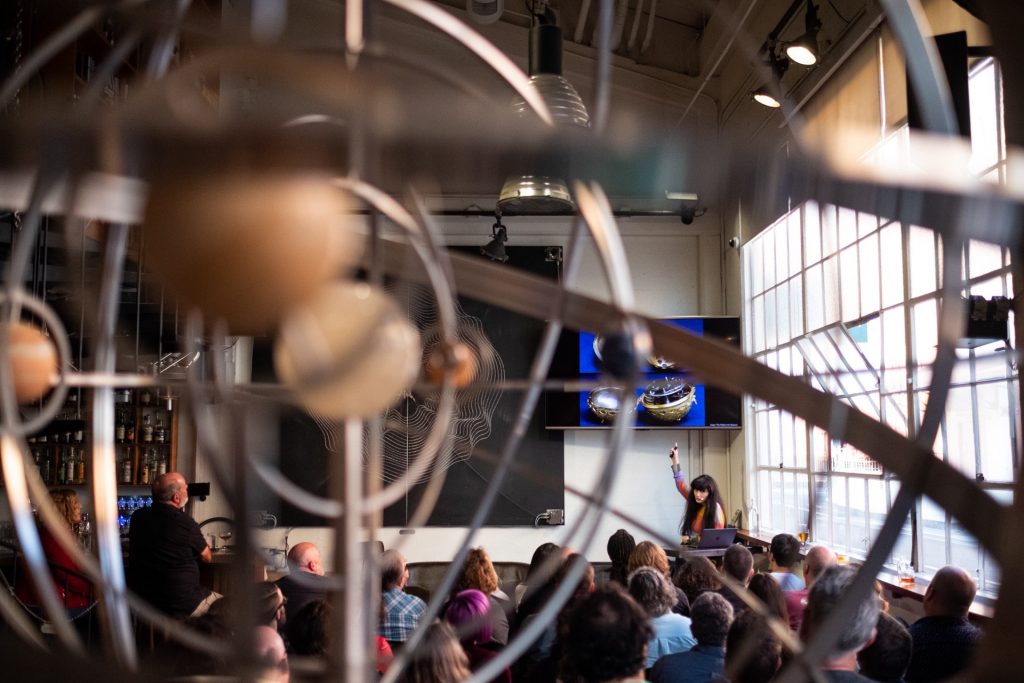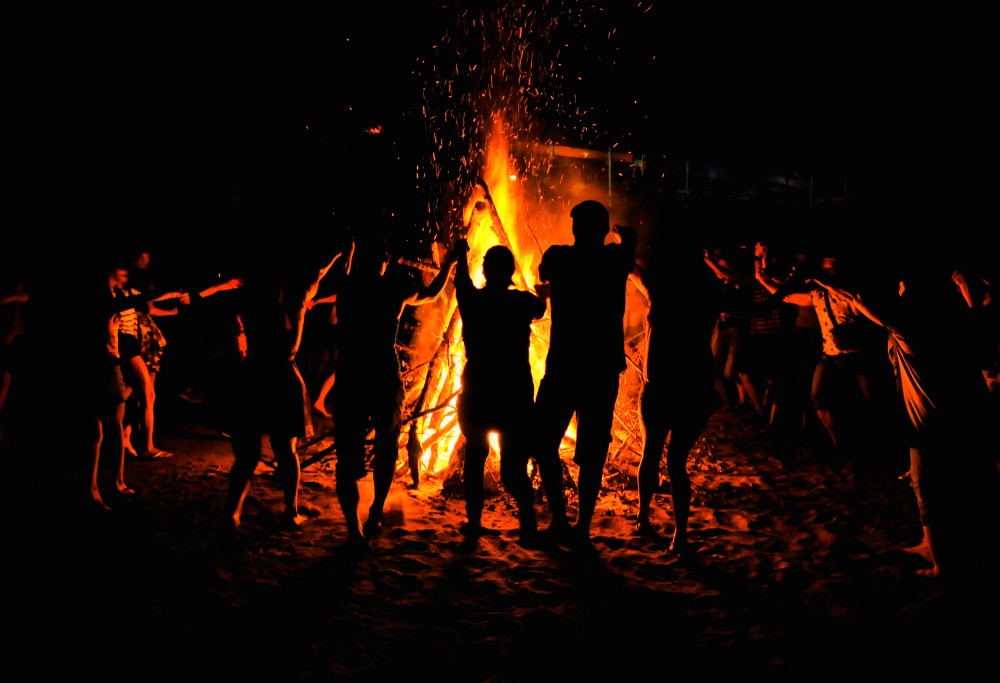By: The Posts Author | Posted on: 25 Apr 24
New Discourses Bullets, Ep. 89 Our future, if the Woke Marxists prevail, may well be to be made into “digital cattle.” What does that mean? It means that we will be led into a state of dependency, perhaps using a Universal Basic Income, and enter into a remade (distributist) economy based on social credit, which is to say compliance with the state’s agendas for us. To make this system work, both practically and in terms of control mechanisms takes incredible amounts of data. Like cattle who earn their feed by being raised for meat, we will earn our “basic income”
New Discourses Bullets, Ep. 89 Our future, if the Woke Marxists prevail, may well be to be made into “digital cattle.” What does that mean? It means that we will be led into a state of dependency, perhaps using a Universal Basic Income, and enter into a remade (distributist) economy based on social credit, which is to say compliance with
By: The Posts Author | Posted on: 22 Feb 23
A Review of Luis Bravo Martins’ and Samantha G. Wolfe’s Metaversed: See Beyond the Hype (December 2022) The term metaverse was coined by Neal Stephenson in his 1992 sci-fi novel… View Post The post The Depressing New Corporate Metaverse appeared first on Areo.
A Review of Luis Bravo Martins’ and Samantha G. Wolfe’s Metaversed: See Beyond the Hype (December 2022) The term metaverse was coined by Neal Stephenson in his 1992 sci-fi novel… View Post The post The Depressing New Corporate Metaverse appeared first on Areo.

By: The Posts Author | Posted on: 13 Apr 21
Aboriginal fish traps. In search of a new story for the future of artificial intelligence, Long Now speaker Genevieve Bell looks back to its cybernetic origins — and keeps on looking, thousands of years into the past. From her new essay in Griffith Review: In this moment, we need to be reminded that stories of the future – about AI, or any kind – are never just about technology; they are about people and they are about the places those people find themselves, the places they might call home and the systems that bind them all together.Genevieve Bell, “Touching the Future” in
Aboriginal fish traps. In search of a new story for the future of artificial intelligence, Long Now speaker Genevieve Bell looks back to its cybernetic origins — and keeps on looking, thousands of years into the past. From her new essay in Griffith Review: In this moment, we need to be reminded that stories of the future – about AI, or

By: The Posts Author | Posted on: 13 Apr 21
Aboriginal fish traps. In search of a new story for the future of artificial intelligence, Long Now speaker Genevieve Bell looks back to its cybernetic origins — and keeps on looking, thousands of years into the past. From her new essay in Griffith Review: In this moment, we need to be reminded that stories of the future – about AI, or any kind – are never just about technology; they are about people and they are about the places those people find themselves, the places they might call home and the systems that bind them all together.Genevieve Bell, “Touching the Future” in
Aboriginal fish traps. In search of a new story for the future of artificial intelligence, Long Now speaker Genevieve Bell looks back to its cybernetic origins — and keeps on looking, thousands of years into the past. From her new essay in Griffith Review: In this moment, we need to be reminded that stories of the future – about AI, or

By: The Posts Author | Posted on: 23 Mar 21
Horologist Brittany Nicole Cox giving a talk at The Interval at Long Now on horological heritage (02019). Photo by Anthony Thornton. How do you measure a year? As straightforward as this seems, it is a truly personal question to each of us. What comes to mind? Life, weather or seismic events, loss or gains, political enterprises, a global pandemic? Or terms such as calendars, months, or dates? As a horologist, someone who studies time, I’ve realized there is no concrete way to answer that question. Yet, my job lies in the calculation, measurement, and the sure prediction of time passing
Horologist Brittany Nicole Cox giving a talk at The Interval at Long Now on horological heritage (02019). Photo by Anthony Thornton. How do you measure a year? As straightforward as this seems, it is a truly personal question to each of us. What comes to mind? Life, weather or seismic events, loss or gains, political enterprises, a global pandemic? Or

By: The Posts Author | Posted on: 23 Mar 21
Horologist Brittany Nicole Cox giving a talk at The Interval at Long Now on horological heritage (02019). Photo by Anthony Thornton. How do you measure a year? As straightforward as this seems, it is a truly personal question to each of us. What comes to mind? Life, weather or seismic events, loss or gains, political enterprises, a global pandemic? Or terms such as calendars, months, or dates? As a horologist, someone who studies time, I’ve realized there is no concrete way to answer that question. Yet, my job lies in the calculation, measurement, and the sure prediction of time passing
Horologist Brittany Nicole Cox giving a talk at The Interval at Long Now on horological heritage (02019). Photo by Anthony Thornton. How do you measure a year? As straightforward as this seems, it is a truly personal question to each of us. What comes to mind? Life, weather or seismic events, loss or gains, political enterprises, a global pandemic? Or

By: The Posts Author | Posted on: 22 Mar 21
With thousands of members from all around the world, from artists and writers to engineers and farmers, the Long Now community has a wide range of perspectives, stories, and experience to offer. On October 20, 02020, we heard 12 of them in a curated set of short Ignite talks given by Long Now Members. What’s an Ignite talk? It’s a story format created by Brady Forrest and Bre Pettis that’s exactly 5 minutes long, told by a speaker who’s working with 20 slides that auto-advance every 15 seconds (ready or not). These 12 Ignite talks ranged from geeky, fanciful, poignant,
With thousands of members from all around the world, from artists and writers to engineers and farmers, the Long Now community has a wide range of perspectives, stories, and experience to offer. On October 20, 02020, we heard 12 of them in a curated set of short Ignite talks given by Long Now Members. What’s an Ignite talk? It’s a

By: The Posts Author | Posted on: 22 Mar 21
With thousands of members from all around the world, from artists and writers to engineers and farmers, the Long Now community has a wide range of perspectives, stories, and experience to offer. On October 20, 02020, we heard 12 of them in a curated set of short Ignite talks given by Long Now Members. What’s an Ignite talk? It’s a story format created by Brady Forrest and Bre Pettis that’s exactly 5 minutes long, told by a speaker who’s working with 20 slides that auto-advance every 15 seconds (ready or not). These 12 Ignite talks ranged from geeky, fanciful, poignant,
With thousands of members from all around the world, from artists and writers to engineers and farmers, the Long Now community has a wide range of perspectives, stories, and experience to offer. On October 20, 02020, we heard 12 of them in a curated set of short Ignite talks given by Long Now Members. What’s an Ignite talk? It’s a

By: The Posts Author | Posted on: 11 Mar 21
When you’re lost in a forest at night, it’s best not to call for help. You have no idead what might be lurking in the shadows. Similarly…Continue reading on Rebel Wisdom »
When you’re lost in a forest at night, it’s best not to call for help. You have no idead what might be lurking in the shadows. Similarly…Continue reading on Rebel Wisdom »
By: The Posts Author | Posted on: 23 Feb 21
The Long Now Foundation · Peter Leyden – The Transformation: A Future History of the World from 02020 to 02050 A compelling case can be made that we are in the early stages of another tech and economic boom in the next 30 years that will help solve our era’s biggest challenges like climate change, and lead to a societal transformation that will be understood as civilizational change by the year 02100. Peter Leyden has built the case for this extremely positive yet plausible scenario of the period from 02020 to 02050 as a sequel to the Wired cover story
The Long Now Foundation · Peter Leyden – The Transformation: A Future History of the World from 02020 to 02050 A compelling case can be made that we are in the early stages of another tech and economic boom in the next 30 years that will help solve our era’s biggest challenges like climate change, and lead to a societal







